- Home
- Jeffery Deaver
The burning wire lr-9
The burning wire lr-9 Read online
The burning wire
( Lincoln Rhyme - 9 )
Jeffery Deaver
The burning wire
Jeffery Deaver
I
THE TROUBLEMAN
Chapter 1
SITTING IN THE control center of Algonquin Consolidated Power and Light's sprawling complex on the East River in Queens, New York, the morning supervisor frowned at the pulsing red words on his computer screen. Critical failure.
Below them was frozen the exact time: 11:20:20:003 a.m.
He lowered his cardboard coffee cup, blue and white with stiff depictions of Greek athletes on it, and sat up in his creaky swivel chair.
The power company control center employees sat in front of individual workstations, like air traffic controllers. The large room was brightly lit and dominated by a massive flat-screen monitor, reporting on the flow of electricity throughout the power grid known as the Northeastern Interconnection, which provided electrical service in New York, Pennsylvania, New Jersey and Connecticut. The architecture and decor of the control center were quite modern-if the year were 1960.
The supervisor squinted up at the board, which showed the juice arriving from generating plants around the country: steam turbines, reactors and the hydroelectric dam at Niagara Falls. In one tiny portion of the spaghetti depicting these electrical lines, something was wrong. A red circle was flashing. Critical failure…
"What's up?" the supervisor asked. A gray-haired man with a taut belly under his short-sleeved white shirt and thirty years' experience in the electricity business, he was mostly curious. While critical-incident indicator lights came on from time to time, actual critical incidents were very rare.
A young technician replied, "Says we have total breaker separation. MH-Twelve."
Dark, unmanned and grimy, Algonquin Consolidated Substation 12, located in Harlem-the "MH" for Manhattan-was a major area substation. It received 138,000 volts and fed the juice through transformers, which stepped it down to 10 percent of that level, divided it up and sent it on its way.
Additional words now popped onto the big screen, glowing red beneath the time and the stark report of the critical failure. MH-12 offline.
The supervisor typed on his computer, recalling the days when this work was done with radio and telephone and insulated switches, amid a smell of oil and brass and hot Bakelite. He read the dense, complicated scroll of text. He spoke softly, as if to himself, "The breakers opened? Why? The load's normal."
Another message appeared. MH-12 offline. RR to affected service area from MH-17, MH-10, MH-13, NJ-18.
"We've got load rerouting," somebody called unnecessarily.
In the suburbs and countryside the grid is clearly visible-those bare overhead high-tension wires and power poles and service lines running into your house. When a line goes down, there's little difficulty finding and fixing the problem. In many cities, though, like New York, the electricity flows underground, in insulated cables. Because the insulation degrades after time and suffers groundwater damage, resulting in shorts and loss of service, power companies rely on double or even triple redundancy in the grid. When substation MH-12 went down, the computer automatically began filling customer demand by rerouting the juice from other locations.
"No dropouts, no brownouts," another tech called.
Electricity in the grid is like water coming into a house from a single main pipe and flowing out through many open faucets. When one is closed, the pressure in the others increases. Electricity's the same, though it moves a lot more quickly than water-nearly 700 million miles an hour. And because New York City demanded a lot of power, the voltages-the electrical equivalent of water pressure-in the substations doing the extra work were running high.
But the system was built to handle this and the voltage indicators were still in the green.
What was troubling the supervisor, though, was why the circuit breakers in MH-12 had separated in the first place. The most common reason for a substation's breakers to pop is either a short circuit or unusually high demand at peak times-early morning, both rush hours and early evening, or when the temperature soars and greedy air conditioners demand their juice.
None of those was the case at 11:20:20:003 a.m. on this comfortable April day.
"Get a troubleman over to MH-Twelve. Could be a bum cable. Or a short in the-"
Just then a second red light began to flash. Critical failure. NJ-18 offline.
Another area substation, located near Paramus, New Jersey, had gone down. It was one of those taking up the slack in Manhattan-12's absence.
The supervisor made a sound, half laugh, half cough. A perplexed frown screwed into his face. "What the hell's going on? The load's within tolerances."
"Sensors and indicators all functioning," one technician called.
"SCADA problem?" the supervisor called. Algonquin's power empire was overseen by a sophisticated Supervisory Control and Data Acquisition program, running on huge Unix computers. The legendary 2003 Northeast Blackout, the largest ever in North America, was caused in part by a series of computer software errors. Today's systems wouldn't let that disaster happen again but that wasn't to say a different computer screwup couldn't occur.
"I don't know," one of his assistants said slowly. "But I'd think it'd have to be. Diagnostics say there's no physical problem with the lines or switchgear."
The supervisor stared at the screen, waited for the next logical step: letting them know which new substation-or stations-would kick in to fill the gap created by the loss of NJ-18.
But no such message appeared.
The three Manhattan substations, 17, 10 and 13, continued alone in providing juice to two service areas of the city that would otherwise be dark. The SCADA program wasn't doing what it should have: bringing in power from other stations to help. Now the amount of electricity flowing into and out of each of those three stations was growing dramatically.
The supervisor rubbed his beard and, after waiting, futilely, for another substation to come online, ordered his senior assistant, "Manually move supply from Q-Fourteen into the eastern service area of MH-Twelve."
"Yessir."
After a moment the supervisor snapped, "No, now."
"Hm. I'm trying."
"Trying. What do you mean, trying?" The task involved simple keyboard strokes.
"The switchgear's not responding."
"Impossible!" The supervisor walked down several short steps to the technician's computer. He typed commands he knew in his sleep.
Nothing.
The voltage indicators were at the end of the green. Yellow loomed.
"This isn't good," somebody muttered. "This's a problem."
The supervisor ran back to his desk and dropped into his chair. His granola bar and Greek athlete cup fell to the floor.
And then another domino fell. A third red dot, like a bull's-eye on a target, began to throb, and in its aloof manner the SCADA computer reported: Critical failure. MH-17 offline.
"No, not another one!" somebody whispered.
And, as before, no other substation stepped up to help satisfy the voracious demands of New Yorkers for energy. Two substations were doing the work of five. The temperature of the electric wires into and out of those stations was growing, and the voltage level bars on the big screen were well into the yellow. MH-12 offline. NJ-18 offline. MH-17 offline. RR to affected service areas from MH-10, MH-13.
The supervisor snapped, "Get more supply into those areas. I don't care how you do it. Anywhere."
A woman at a nearby control booth sat up fast. "I've got forty K I'm running through feeder lines down from the Bronx."
Forty thousand volts wasn't much and it would be tricky to move it through feede
r lines, which were meant for about a third that much voltage.
Somebody else was able to bring some juice down from Connecticut.
The voltage indicator bars continued to rise but more slowly now.
Maybe they had this under control. "More!"
But then the woman stealing power from the Bronx said in a choking voice, "Wait, the transmission's reduced itself to twenty thousand. I don't know why."
This was happening throughout the region. As soon as a tech was able to bring in a bit more current to relieve the pressure, the supply from another location dried up.
And all of this drama was unfolding at breathtaking speeds.
700 million miles an hour…
And then yet another red circle, another bullet wound. Critical failure. MH-13 offline.
A whisper: "This can't be happening." MH-12 offline. NJ-18 offline. MH-17 offline. MH-13 offline. RR to affected service areas from MH-10.
This was the equivalent of a huge reservoir of water trying to shoot through a single tiny spigot, like the kind that squirts cold water out of a refrigerator door. The voltage surging into MH-10, located in an old building on West Fifty-seventh Street in the Clinton neighborhood of Manhattan, was four or five times normal load and growing. The circuit breakers would pop at any moment, averting an explosion and a fire, but returning a good portion of Midtown to colonial times.
"North seems to be working better. Try the north, get some juice from the north. Try Massachusetts."
"I've got some: fifty, sixty K. From Putnam."
"Good."
And then: "Oh, Jesus, Lord!" somebody cried.
The supervisor didn't know who it was; everybody was staring at their screens, heads down, transfixed. "What?" he raged. "I don't want to keep hearing that kind of thing. Tell me!"
"The breaker settings in Manhattan-Ten! Look! The breakers!"
Oh, no. No…
The circuit breakers in MH-10 had been reset. They would now allow through their portal ten times the safe load.
If the Algonquin control center couldn't reduce the pressure of the voltage assaulting the substation soon, the lines and switchgear inside the place would allow through a lethally high flood of electricity. The substation would explode. But before that happened the juice would race through the distribution feeder lines into belowground transformer boxes throughout the blocks south of Lincoln Center and into the spot networks in office buildings and big high-rises. Some breakers would cut the circuit but some older transformers and service panels would just melt into a lump of conductive metal and let the current continue on its way, setting fires and exploding in arc flashes that could burn to death anybody near an appliance or wall outlet.
For the first time the supervisor thought: Terrorists. It's a terror attack. He shouted, "Call Homeland Security and the NYPD. And reset them, goddamn it. Reset the breakers."
"They're not responding. I'm locked out of MH-Ten."
"How can you be fucking locked out?"
"I don't-"
"Is anybody inside? Jesus, if they are, get them out now!" Substations were unmanned, but workers occasionally went inside for routine maintenance and repairs.
"Sure, okay."
The indicator bars were now into the red.
"Sir, should we shed load?"
Grinding his teeth, the supervisor was considering this. Also known as a rolling blackout, shedding load was an extreme measure in the power business. "Load" was the amount of juice that customers were using. Shedding was a manual, controlled shutdown of certain parts of the grid to prevent a larger crash of the system.
It was a power company's last resort in the battle to keep the grid up and would have disastrous consequences in the densely populated portion of Manhattan that was at risk. The damage to computers alone would be in the tens of millions, and it was possible that people would be injured or even lose their lives. Nine-one-one calls wouldn't get through. Ambulances and police cars would be stuck in traffic, with stoplights out. Elevators would be frozen. There'd be panic. Muggings and looting and rapes invariably rose during a blackout, even in daylight.
Electricity keeps people honest.
"Sir?" the technician asked desperately.
The supervisor stared at the moving voltage indicator bars. He grabbed his own phone and called his superior, a senior vice president at Algonquin. "Herb, we have a situation." He briefed the man.
"How'd this happen?"
"We don't know. I'm thinking terrorists."
"God. You called Homeland Security?"
"Yeah, just now. Mostly we're trying to get more power into the affected areas. We're not having much luck."
He watched the indicator bars continue to rise through the red.
The vice president asked, "Okay. Recommendations?"
"We don't have much choice. Shed load."
"A good chunk of the city'll go black for at least a day."
"But I don't see any other options. With that much juice flowing in, the station'll blow if we don't do something."
His boss thought for a moment. "There's a second transmission line running through Manhattan-Ten, right?"
The supervisor looked up at the board. A high-voltage cable went through the substation and headed west to deliver juice to parts of New Jersey. "Yes, but it's not online. It's just running through a duct there."
"But could you splice into it and use that for supply to the diverted lines?"
"Manually?… I suppose, but… but that would mean getting people inside MH-Ten. And if we can't hold the juice back until they're finished, it'll flash. That'll kill 'em all. Or give 'em third-degrees over their entire bodies."
A pause. "Hold on. I'm calling Jessen."
Algonquin Consolidated's CEO. Also known, privately, as "The All-Powerful."
As he waited, the supervisor stared at the techs surrounding him. He kept staring at the board too. The glowing red dots.
Critical failure…
Finally the supervisor's boss came back on. His voice cracked. He cleared his throat and after a moment said, "You're supposed to send some people in. Manually splice into the line."
"That's what Jessen said?"
Another pause. "Yes."
The supervisor whispered, "I can't order anybody in there. It's suicide."
"Then find some volunteers. Jessen said you are not, understand me, not to shed load under any circumstances."
Chapter 2
THE DRIVER EASED the M70 bus through traffic toward the stop on Fifty-seventh Street near where Tenth Avenue blended into Amsterdam. He was in a pretty good mood. The new bus was a kneeling model, which lowered to the sidewalk to make stepping aboard easier, and featured a handicapped ramp, great steering and, most important, a rump-friendly driver's seat.
Lord knew he needed that, spending eight hours a day in it.
No interest in subways, the Long Island Railroad or Metro North. No, he loved buses, despite the crazy traffic, the hostility, attitudes and anger. He liked how democratic it was to travel by bus; you saw everybody from lawyers to struggling musicians to delivery boys. Cabs were expensive and stank; subways didn't always go where you wanted to. And walking? Well, this was Manhattan. Great if you had the time but who did? Besides, he liked people and he liked the fact that he could nod or smile or say hello to every single person who got on his vehicle. New Yorkers weren't, like some people said, unfriendly at all. Just sometimes shy, insecure, cautious, preoccupied.
But often all it took was a grin, a nod, a single word… and they were your new friend.
And he was happy to be one.
If only for six or seven blocks.
The personal greeting also gave him a chance to spot the wackos, the drunks, the cluck-heads and tweakers and decide if he needed to hit the distress button.
This was, after all, Manhattan.
Today was beautiful, clear and cool. April. One of his favorite months. It was about 11:30 a.m. and the bus was crowded as people were heading east f
or lunch dates or errands on their hour off. Traffic was moving slowly as he nosed the huge vehicle closer to the stop, where four or five people stood beside a bus stop sign pole.
He was approaching the stop and happened to look past the people waiting to get on board, his eyes taking in the old brown building behind the stop. An early twentieth-century structure, it had several gridded windows but was always dark inside; he'd never seen anybody going in or out. A spooky place, like a prison. On the front was a flaking sign in white paint on a blue background.
ALGONQUIN CONSOLIDATED POWER AND LIGHT COMPANY
SUBSTATION MH-10
PRIVATE PROPERTY
DANGER. HIGH VOLTAGE. TRESPASS PROHIBITED.
He rarely paid attention to the place but today something had caught his eye, something, he believed, out of the ordinary. Dangling from the window, about ten feet off the ground, was a wire, about a half inch in diameter. It was covered with dark insulation up to the end. There, the plastic or rubber was stripped away, revealing silvery metal strands bolted to a fitting of some kind, a flat piece of brass. Damn big hunk of wire, he thought.
And just hanging out the window. Was that safe?
He braked the bus to a complete stop and hit the door release. The kneeling mechanism engaged and the big vehicle dipped toward the sidewalk, the bottom metal stair inches from the ground.
The driver turned his broad, ruddy face toward the door, which eased open with a satisfying hydraulic hiss. The folks began to climb on board. "Morning," the driver said cheerfully.
A woman in her eighties, clutching an old shabby Henri Bendel shopping bag, nodded back and, using a cane, staggered to the rear, ignoring the empty seats in the front reserved for the elderly and disabled.
How could you not just love New Yorkers?
Then sudden motion in the rearview mirror. Flashing yellow lights. A truck was speeding up behind him. Algonquin Consolidated. Three workers stepped out and stood in a close group, talking among themselves. They held boxes of tools and thick gloves and jackets. They didn't seem happy as they walked slowly toward the building, staring at it, heads close together as they debated something. One of those heads was shaking ominously.

 A Maiden's Grave
A Maiden's Grave Trouble in Mind: The Collected Stories - 3
Trouble in Mind: The Collected Stories - 3 The October List
The October List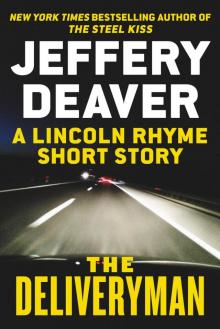 The Deliveryman
The Deliveryman Garden of Beasts
Garden of Beasts Triple Threat
Triple Threat The Broken Window
The Broken Window The Steel Kiss
The Steel Kiss Twisted: The Collected Stories - 1
Twisted: The Collected Stories - 1 Solitude Creek
Solitude Creek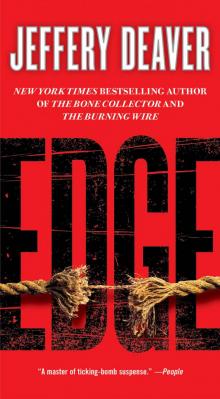 Edge
Edge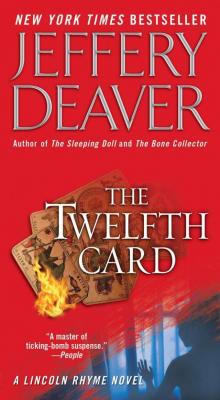 The Twelfth Card
The Twelfth Card The Bone Collector
The Bone Collector The Stone Monkey
The Stone Monkey The Sleeping Doll
The Sleeping Doll The Vanished Man
The Vanished Man The Kill Room
The Kill Room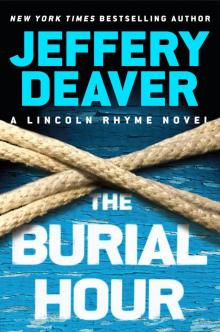 The Burial Hour
The Burial Hour An Acceptable Sacrifice
An Acceptable Sacrifice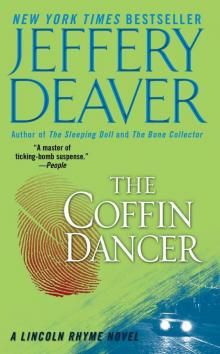 The Coffin Dancer
The Coffin Dancer The Lesson of Her Death
The Lesson of Her Death The Empty Chair
The Empty Chair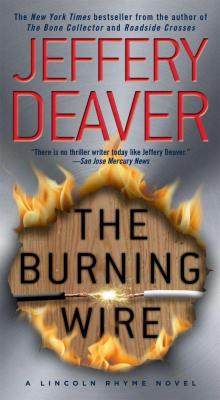 The Burning Wire
The Burning Wire Watchlist
Watchlist Captivated
Captivated The Cold Moon
The Cold Moon Speaking in Tongues
Speaking in Tongues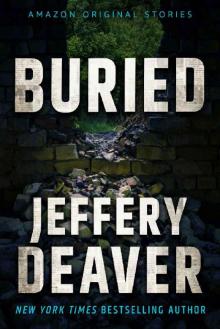 Buried (Hush collection)
Buried (Hush collection)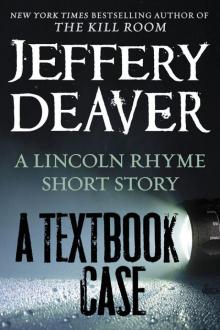 A Textbook Case
A Textbook Case The Victims' Club
The Victims' Club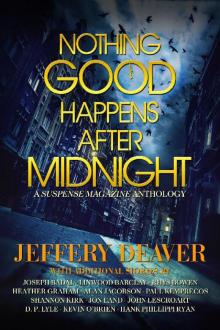 Nothing Good Happens After Midnight: A Suspense Magazine Anthology
Nothing Good Happens After Midnight: A Suspense Magazine Anthology The Bodies Left Behind
The Bodies Left Behind Turning Point
Turning Point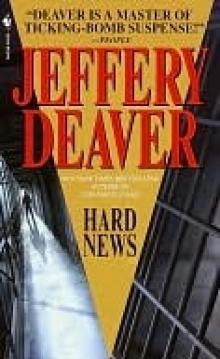 Hard News
Hard News The Blue Nowhere
The Blue Nowhere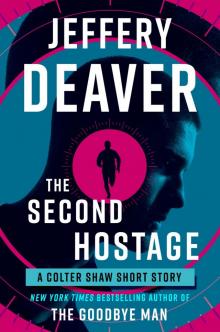 The Second Hostage
The Second Hostage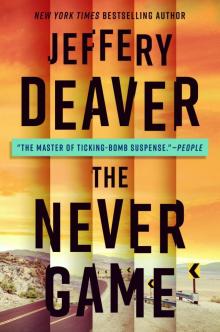 The Never Game
The Never Game The Devil's Teardrop
The Devil's Teardrop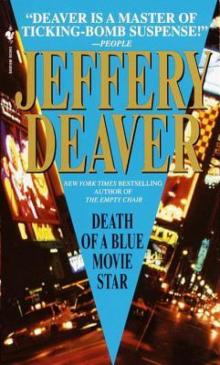 Death of a Blue Movie Star
Death of a Blue Movie Star The Skin Collector
The Skin Collector The Final Twist
The Final Twist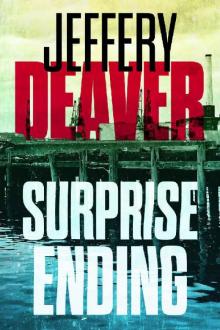 Surprise Ending
Surprise Ending Twisted: The Collected Stories
Twisted: The Collected Stories Solitude Creek: Kathryn Dance Book 4
Solitude Creek: Kathryn Dance Book 4 Twisted: The Collected Short Stories of Jeffery Deaver
Twisted: The Collected Short Stories of Jeffery Deaver Rhymes With Prey
Rhymes With Prey Shallow Graves
Shallow Graves Bloody River Blues
Bloody River Blues Trouble in Mind: The Collected Stories, Volume 3
Trouble in Mind: The Collected Stories, Volume 3 Lincoln Rhyme 10 - The Kill Room
Lincoln Rhyme 10 - The Kill Room The Cutting Edge
The Cutting Edge Where the Evidence Lies
Where the Evidence Lies Hell's Kitchen
Hell's Kitchen Twisted
Twisted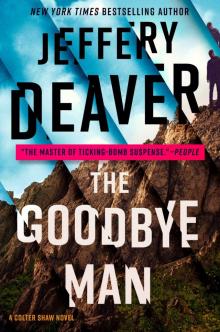 The Goodbye Man
The Goodbye Man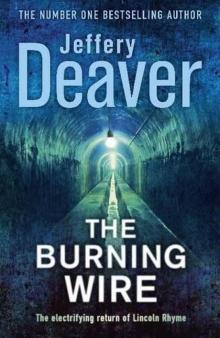 The burning wire lr-9
The burning wire lr-9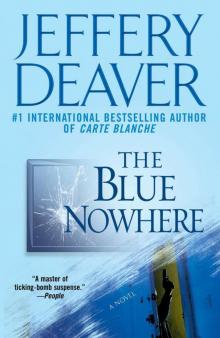 The Blue Nowhere: A Novel
The Blue Nowhere: A Novel Roadside Crosses: A Kathryn Dance Novel
Roadside Crosses: A Kathryn Dance Novel The Debriefing
The Debriefing More Twisted: Collected Stories, Vol. II
More Twisted: Collected Stories, Vol. II The Kill Room lr-10
The Kill Room lr-10 A Dish Served Cold
A Dish Served Cold Bloody River Blues: A Location Scout Mystery
Bloody River Blues: A Location Scout Mystery The Bodies Left Behind: A Novel
The Bodies Left Behind: A Novel Where the Evidence Lies (A Mulholland / Strand Magazine Short)
Where the Evidence Lies (A Mulholland / Strand Magazine Short)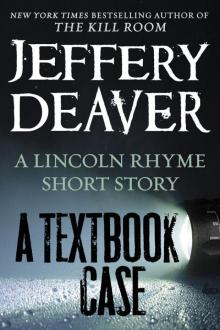 A Textbook Case (lincoln rhyme)
A Textbook Case (lincoln rhyme) Copycat
Copycat The Chopin Manuscript: A Serial Thriller
The Chopin Manuscript: A Serial Thriller Carte Blanche
Carte Blanche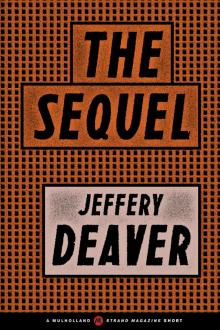 The Sequel
The Sequel